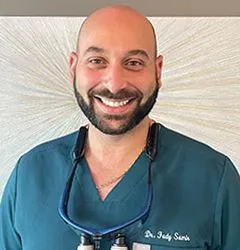Dental technology encompasses various innovative dentistry tools, equipment, and techniques to enhance diagnosis, treatment, and patient care. From digital imaging and computer-aided design to laser dentistry and intraoral cameras, dental technology can provide numerous benefits, including improved accuracy, efficiency, and patient comfort. By leveraging advanced technology, dentists in Elk Grove, CA, can achieve precise diagnoses, deliver minimally invasive treatments, and provide personalized care tailored to each patient's needs, ultimately leading to better treatment outcomes, enhanced patient satisfaction, and a higher standard of oral health care.
Uses of Dental Technology
- Dental technology such as digital X-rays, intraoral cameras, and cone beam computed tomography (CBCT) scanners aid in accurately diagnosing dental issues, including cavities, fractures, infections, and abnormalities in the teeth and surrounding structures.
- Advanced imaging systems and software assist dentists in creating detailed treatment plans for various dental procedures — including restorative, orthodontic, and surgical treatments — by providing precise 3D models of the oral cavity.
- CAD/CAM technology efficiently fabricates custom-designed dental restorations such as crowns, bridges, veneers, and implant restorations, providing patients with durable, aesthetically pleasing, same-day solutions.
- Dental technology aids in root canal therapy by providing enhanced visualization of the root canal system, precise instrumentation, and disinfection techniques, resulting in successful outcomes and preservation of natural teeth.
- Laser dentistry and digital imaging systems facilitate minimally invasive periodontal therapy by targeting diseased tissue, promoting tissue regeneration, and monitoring treatment progress with precision and efficiency.
- Intraoral scanners and digital treatment planning software assist orthodontists in designing and customizing orthodontic appliances, such as braces and clear aligners, for precise tooth alignment and optimal treatment outcomes.
- Advanced imaging technology, including CBCT scanners, aids in precise implant placement and treatment planning, while CAD/CAM technology enables the accurate and efficient fabrication of custom implant restorations.
- Dental technology enhances patient education and communication by providing visual aids, interactive tools, and digital treatment simulations that help patients understand their oral health conditions, treatment options, and expected outcomes more clearly. Contact us today!
Types of Dental Technology
Digital Imaging Systems
Digital imaging systems, including intraoral cameras, digital X-rays, and cone beam computed tomography (CBCT) scanners, have transformed diagnostic capabilities in dentistry. Intraoral cameras allow dentists to capture high-resolution images of the teeth and oral tissues, providing a detailed view that aids in diagnosis and treatment planning. Digital X-rays produce reduced radiation exposure and instant image acquisition, enabling dentists to detect dental issues such as cavities, fractures, and infections more accurately. CBCT scanners produce detailed 3D images of the teeth, jaws, and surrounding structures, facilitating precise implant placement, orthodontic planning, and oral surgery procedures.
Laser Dentistry
Laser dentistry utilizes advanced technology to perform a wide range of dental procedures with enhanced precision, comfort, and efficiency. Dental lasers can be used for soft tissue procedures such as gum contouring, frenectomies, periodontal therapy, and hard tissue procedures such as cavity preparation, crown lengthening, and root canal therapy. Laser dentistry can provide numerous benefits, including minimized discomfort, reduced bleeding and swelling, faster healing times, and improved infection control, making it an attractive option for patients and dentists.
CAD/CAM Technology
CAD/CAM technology has revolutionized restorative dentistry by enabling the fabrication of custom-designed dental restorations such as crowns, bridges, veneers, and implant restorations in a single visit. With CAD/CAM technology, digital impressions of the teeth are captured using intraoral scanners, eliminating the need for messy impression materials. The digital impressions are then used to design the restoration on a computer, which is subsequently milled from a ceramic or composite material block using a chairside milling machine. CAD/CAM restorations provide precise fit, natural aesthetics, and same-day delivery, providing patients with convenience and efficiency.
Intraoral Scanners
Intraoral scanners are handheld devices that precisely and efficiently capture digital impressions of the teeth and oral tissues. These scanners utilize advanced optical technology to create highly accurate 3D models of the oral cavity, eliminating the need for traditional impression materials and trays. Intraoral scanners are used for various applications, including restorative dentistry, orthodontics, and implant dentistry, enabling dentists to streamline workflows, improve patient comfort, and achieve predictable outcomes.
3D Printing
3D printing technology has emerged as a valuable tool in dentistry for fabricating dental models, surgical guides, custom implants, and temporary restorations with precision and efficiency. Dental 3D printers use digital files generated from intraoral scanners or CBCT scans to produce physical models or prototypes layer by layer from biocompatible materials such as resins or metals. 3D printing enables dentists to streamline workflows, customize treatments, and achieve optimal patient outcomes.
The Benefits of Dental Technology
Dental technology in Elk Grove, CA, provides many benefits that enhance patient care, streamline workflows, and improve treatment outcomes in dentistry. Firstly, it enhances diagnostic accuracy by providing detailed imaging of the oral cavity, allowing dentists to detect dental issues such as cavities, fractures, and infections with greater precision. This aids in early intervention and prevents the progression of dental problems, ultimately preserving natural teeth and improving long-term oral health. Additionally, dental technology enables dentists at Smile Maker Implant & General Dentistry to create personalized treatment plans tailored to each patient's unique needs, ensuring optimal outcomes and patient satisfaction. Furthermore, advancements in dental technology, such as CAD/CAM systems and 3D printing, have revolutionized restorative dentistry by offering same-day restorations that are durable, aesthetically pleasing, and precisely fitted, saving time for dentists and patients while providing long-lasting solutions.
Secondly, dental technology enhances patient comfort and convenience by reducing treatment times, minimizing discomfort, and offering less invasive treatment options. For example, laser dentistry enables soft tissue procedures with minimal bleeding, swelling, and pain, resulting in faster healing times and improved patient experiences. Similarly, digital imaging systems and intraoral scanners eliminate the need for traditional impression materials and trays, making dental visits more comfortable and efficient for patients. Overall, dental technology plays a pivotal role in modern dentistry by improving diagnostic capabilities, treatment efficiency, patient comfort, and access to care, ultimately leading to better oral health outcomes and enhanced quality of life for patients.
By embracing dental technology, dental professionals can provide more accurate diagnoses, minimally invasive treatments, and personalized patient care, ultimately leading to healthier smiles and happier patients. Visit Smile Maker Implant & General Dentistry at 9340 W Stockton Blvd., Suite 100, Elk Grove, CA 95758, US, or call (916) 683-5732 for more information.

